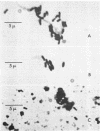Abstract
The bactericidal activity and the chemical and physical characteristics of lipid fractions of extracts from organs of normal mice and guinea pigs have been described previously. The present study describes the effects of commercially prepared fatty acids which are representative of those found in the extracts. Saturated fatty acids with 12, 14, and 16 carbon atoms and unsaturated fatty acids with more than one double bond were the most effective in killing Pasteurella pestis. Tweens 20 and 80, Spans 40 and 80, and some of the methyl esters of the fatty acids did not strongly inhibit P. pestis. It was concluded, therefore, that both the length of the carbon chain and the presence of the carboxyl group of the free fatty acids were important in their effects on P. pestis. Neither the very active lauric acid nor the relatively inactive oleic acid appeared to severely alter the morphology of P. pestis. Supernatant fluids from incubated mixtures of sodium laurate or sodium oleate and cells did not contain significantly greater concentrations of proteins or nucleic acids than did the controls. These observations do not preclude an alteration of the permeability of the cell walls.
Full text
PDF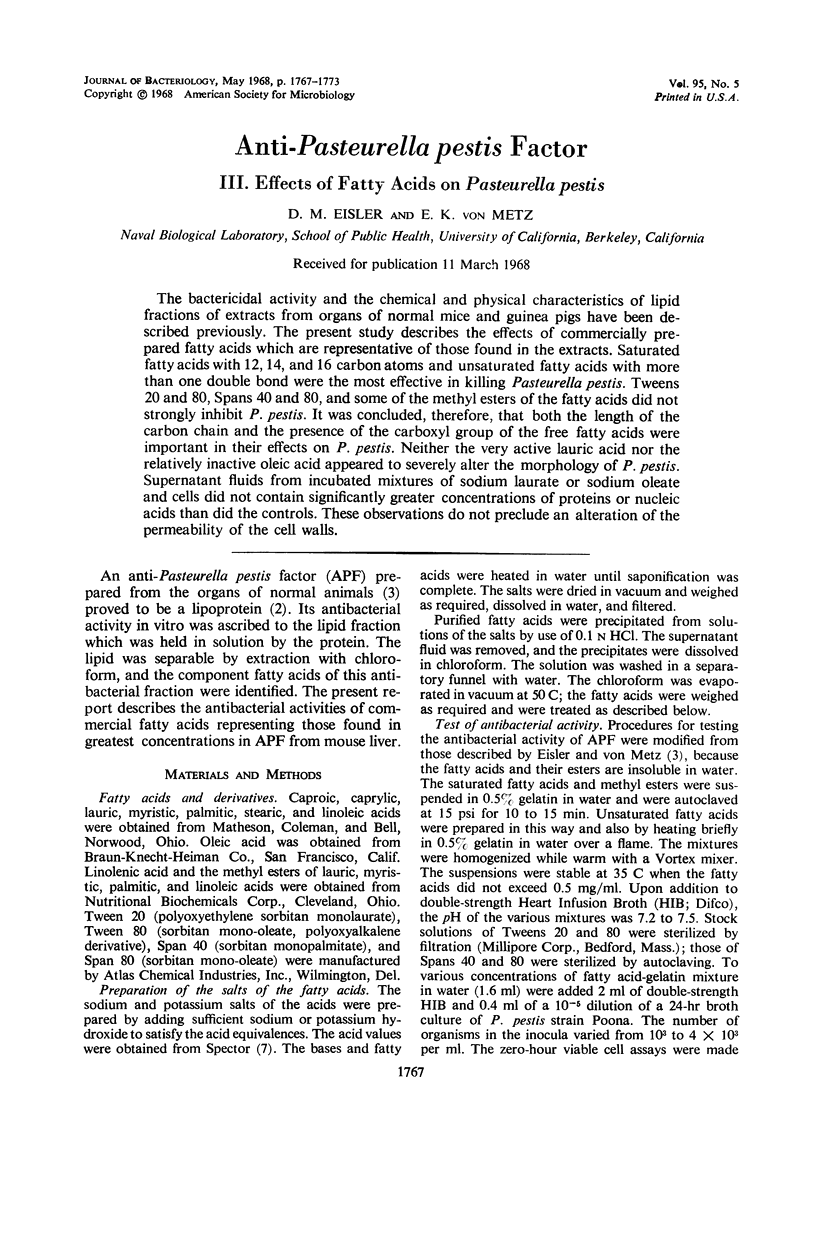
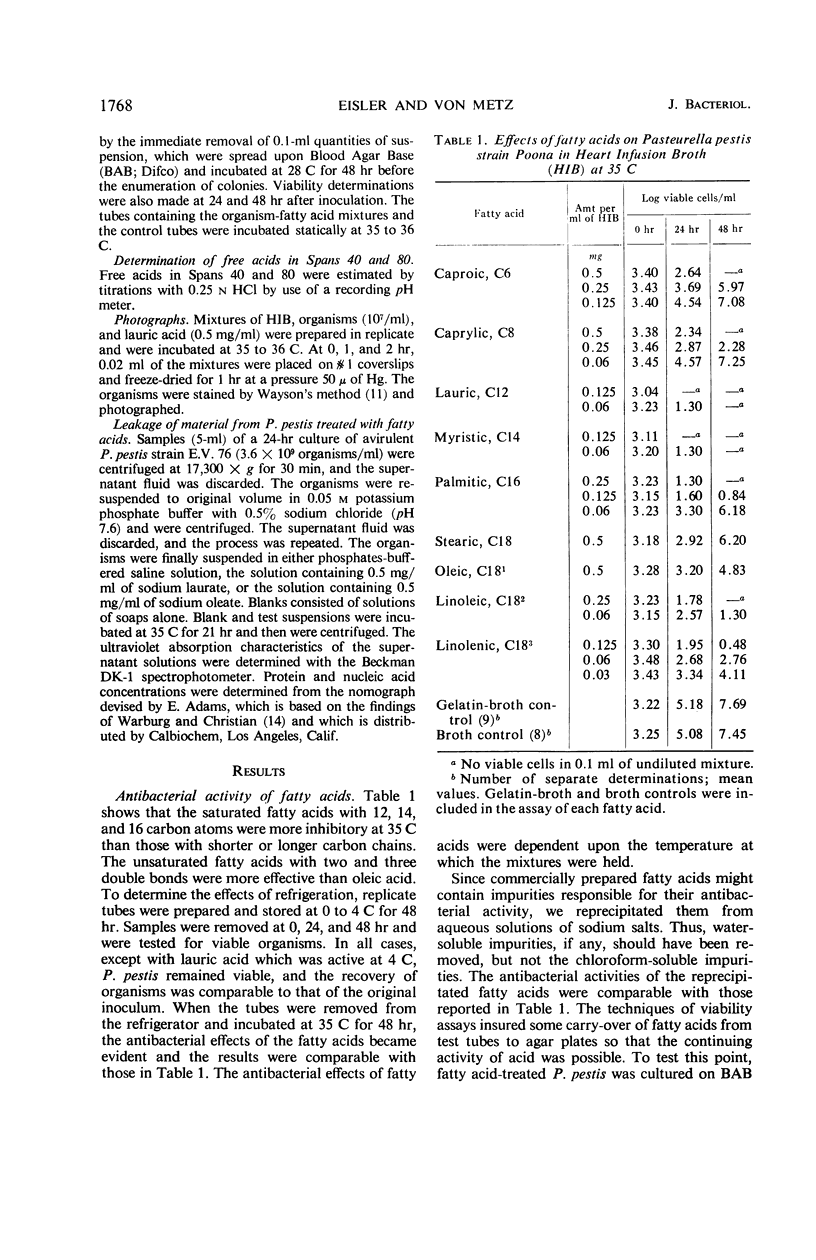
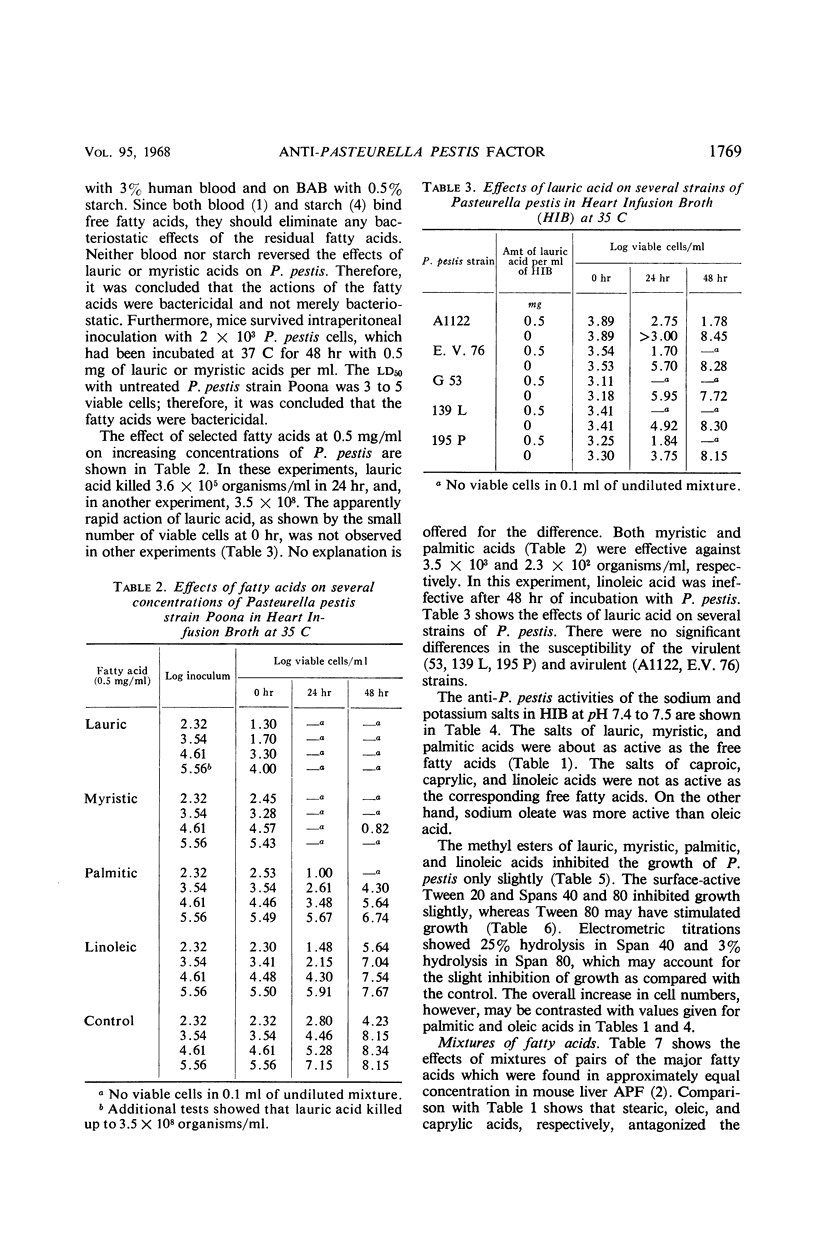
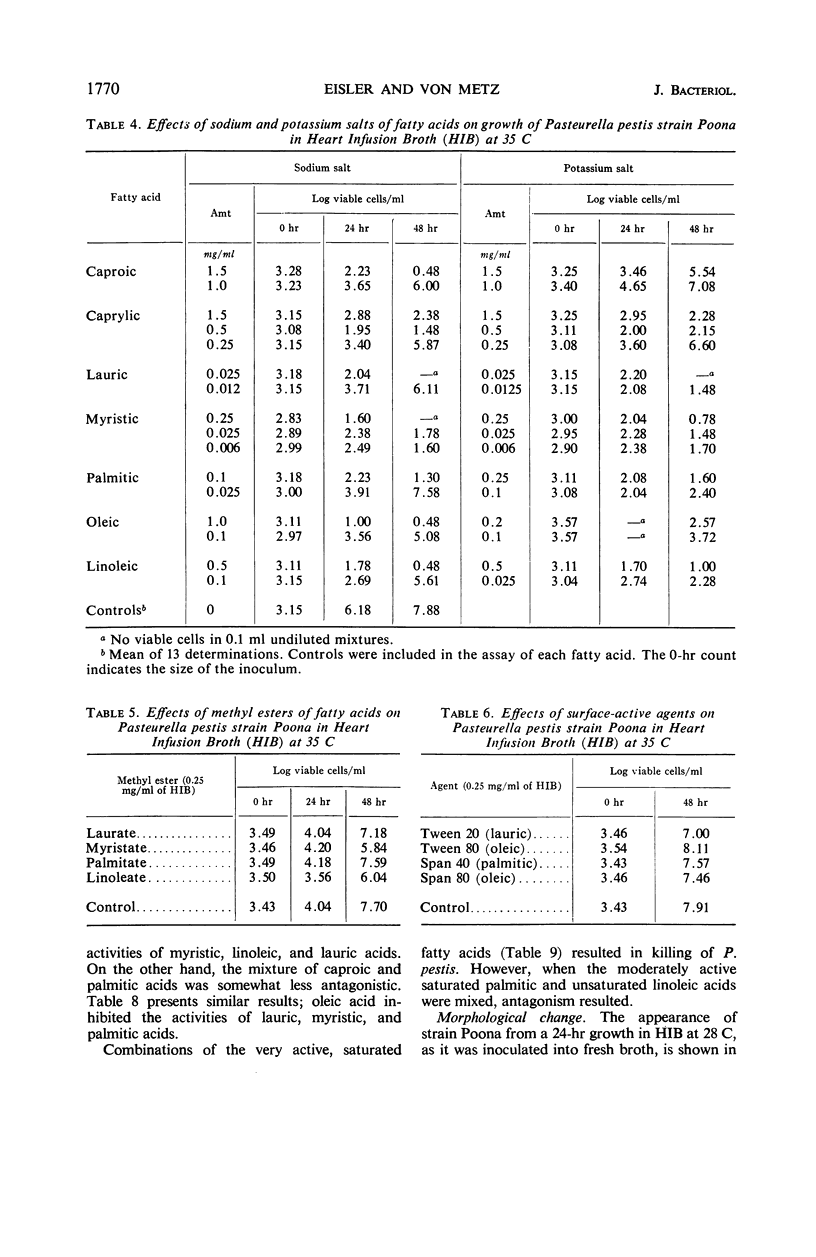
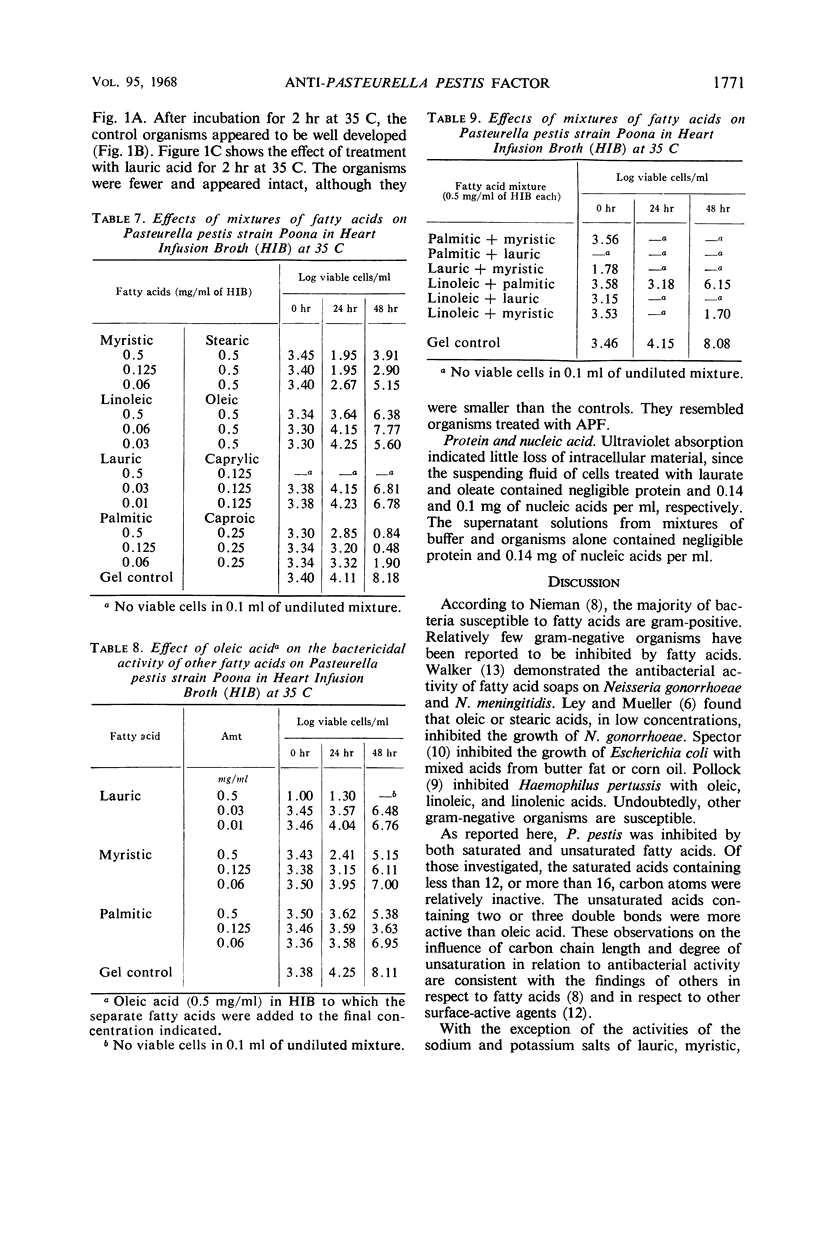
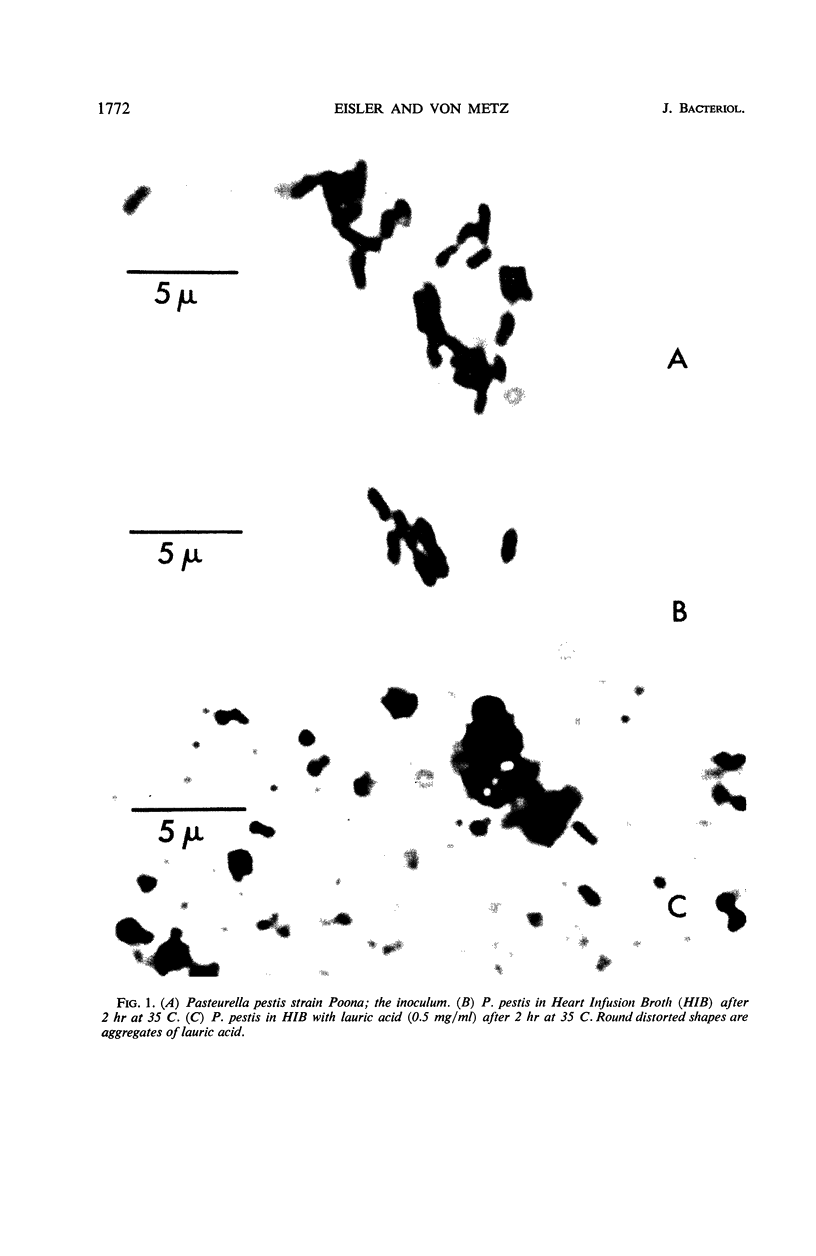
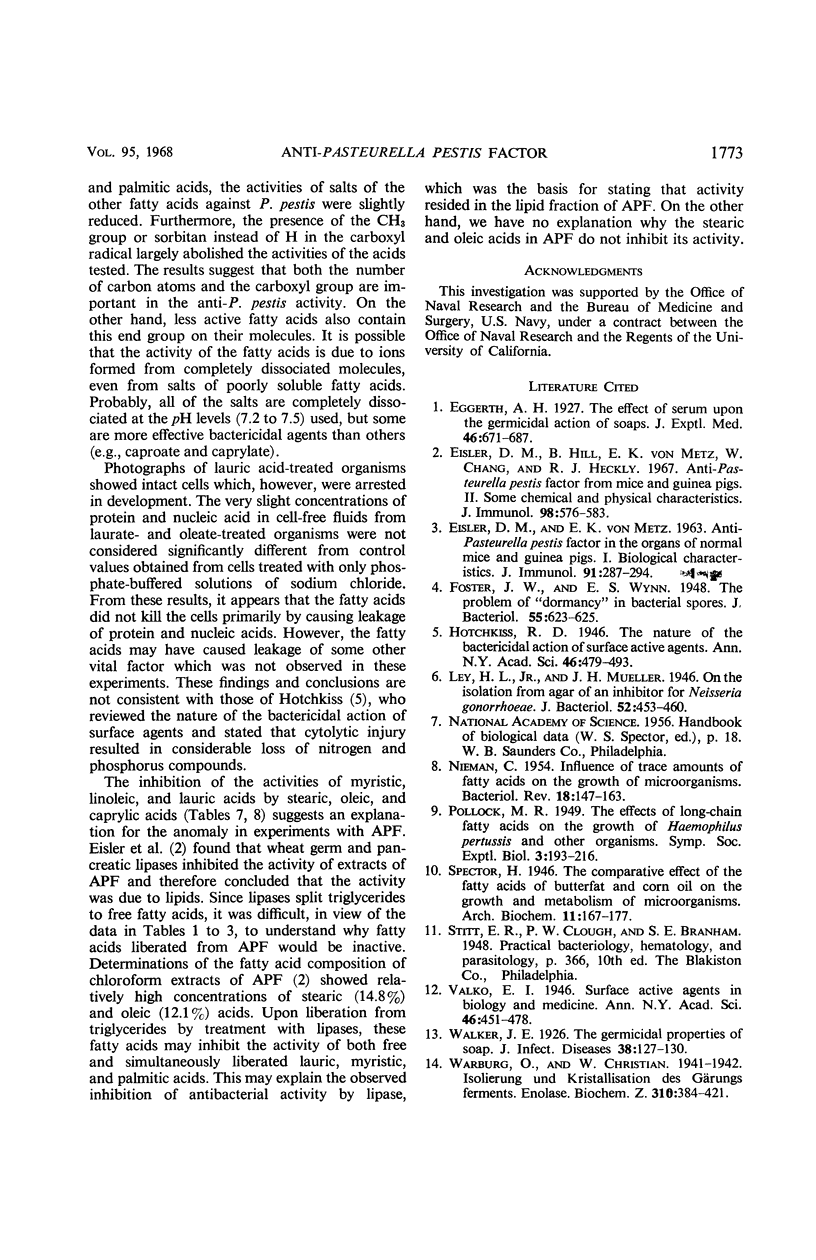
Images in this article
Selected References
These references are in PubMed. This may not be the complete list of references from this article.
- EISLER D. M., VONMETZ E. ANTI-PASTEURELLA PESTIS FACTOR IN THE ORGANS OF NORMAL MICE AND GUINEA PIGS. I. BIOLOGIC CHARACTERISTICS. J Immunol. 1963 Aug;91:287–294. [PubMed] [Google Scholar]
- Eisler D. M., Hill B., Von Metz E. K., Chang W. J., Heckly R. J. Anti-Pasteurella pestis factor from mice and guinea pigs. II. Some chemical and physical characteristics. J Immunol. 1967 Mar;98(3):576–583. [PubMed] [Google Scholar]
- Foster J. W., Wynne E. S. The Problem of "Dormancy" in Bacterial Spores. J Bacteriol. 1948 May;55(5):623–625. doi: 10.1128/jb.55.5.623-625.1948. [DOI] [PMC free article] [PubMed] [Google Scholar]
- Ley H. L., Jr, Mueller J. H. On the Isolation from Agar of an Inhibitor for Neisseria gonorrhoeae. J Bacteriol. 1946 Oct;52(4):453–460. doi: 10.1128/jb.52.4.453-460.1946. [DOI] [PMC free article] [PubMed] [Google Scholar]
- NIEMAN C. Influence of trace amounts of fatty acids on the growth of microorganisms. Bacteriol Rev. 1954 Jun;18(2):147–163. doi: 10.1128/br.18.2.147-163.1954. [DOI] [PMC free article] [PubMed] [Google Scholar]



